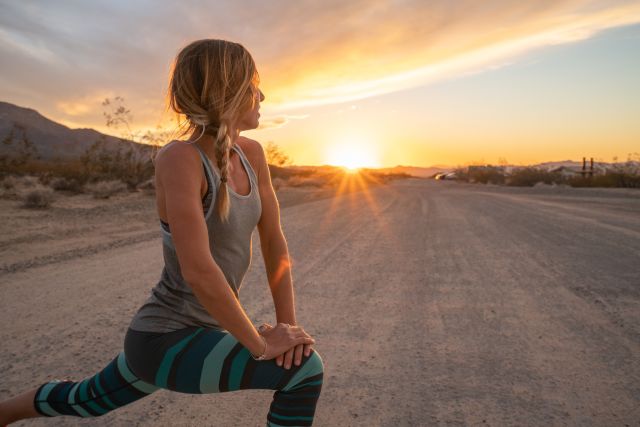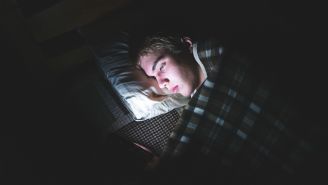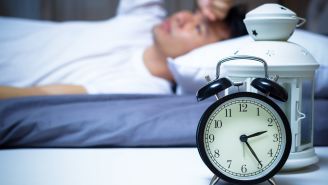Updated on March 1, 2024.
The time has come to spring ahead.
On Sunday, March 10 at 2 a.m., most people across the United States will move their clocks ahead by one hour for daylight saving time (DST). On one hand, the change gives us extra daylight in the evening. But it also deprives us of all-important shut-eye.
Research shows that we lose an average of 40 minutes of sleep on the Monday after the daylight saving transition. This is why 55 percent of Americans report feeling tired after the time change, according to a survey by the American Academy of Sleep Medicine.
And drowsiness isn’t the only downside: Sleep loss and poor quality of sleep due to DST has been linked to car crashes, poor performance at work and school, heart attacks, and strokes.
Why do we have daylight saving time anyway?
Many people believe that farmers created daylight saving so they would have more time to work the fields, but this is a myth. It actually began during World War I as a way to save fuel and reduce electricity use. The practice was reinstated for World War II.
Following the war, DST became a matter of local policy until the passage of the Uniform Time Act in 1966, which set daylight saving to begin on the last Sunday of April and end on the last Sunday of October. In 1986, DST was moved up to start the first weekend of April. By 2005, the Energy Policy Act added an additional four weeks to daylight saving time. Today, it begins on the second Sunday in March at 2 a.m. and runs until the first Sunday in November.
People don't love the time change
Time change is not without controversy. Not every state or U.S. territory adheres to daylight saving. It is not observed in Hawaii, Arizona (with the exception of the Navajo Nation), Puerto Rico, American Samoa, Guam, the Virgin Islands, or the Northern Mariana Islands. Several states, meanwhile, are seeking congressional approval to implement daylight saving all year.
At the federal level, in March 2023 the Sunshine Protection Act was introduced in the U.S. Senate. The bill would end time changes and make daylight saving time permanent. As of February 2024, the legislation was still awaiting passage by the U.S. House of Representatives before it could go to President Biden to sign into law.
Health consequences of daylight saving
Opponents have long argued that the time change can be detrimental to various aspects of health, and there’s research to back this up.
In a January 2020 study published in Current Biology, researchers analyzed data from 732,835 car accidents recorded in the Fatality Analysis Reporting System from 1996 to 2017. They found that the risk of fatal car accidents increased by 6 percent during the week following daylight saving time, resulting in about 28 additional deaths each year. This is likely due to sleep loss, fatigue, and a darker morning commute.
The findings show that individuals who live further west within a time zone are at even greater risk because the sun rises and sets later, yet they may still have to be at work at the same time as people further east.
The loss of that hour of sleep may disrupt one’s circadian rhythm. This self-sustaining 24-hour internal body clock responds to daylight and darkness to set our sleep/wake cycle. Researchers suspect that this disruption may increase risk for heart attacks and strokes.
A November 2016 study from the University of Turku in Finland found that hospitalizations for strokes rose by 8 percent during the first two days of daylight saving. Researchers looked at 10 years of stroke data during the two weeks before and the three weeks following a daylight-saving time transition.
The chances of having a heart attack may also rise in the days following the start of daylight saving. In fact, risk of a heart attack jumped 24 percent on the Monday after the time change, tapering off over the remainder of the week, according to a November 2014 study published in the journal Open Heart. The study could not prove that daylight saving caused heart attacks, but researchers speculate that the increased risk is due to a combination of the disturbance of the circadian rhythm caused by the time change, along with preexisting risk factors for heart attack.
5 ways to make it easier to spring forward
It usually takes a few weeks for our bodies to adapt after the transition. But you can start protecting yourself from the negative effects of the change by following these tips.
Get ahead of daylight saving. Try to get enough sleep in the days leading up to the time change, because the effects of sleep loss tend to be most pronounced if you start at a deficit. People getting fewer than seven hours of sleep per night may have a more difficult time adjusting to the time change. In addition to getting the recommended seven to nine hours per night, you can also begin to gradually adjust your sleep and wake times a few days before the transition. Shift your bedtime 15 to 20 minutes earlier each night until Sunday.
Follow the light. Open the curtains as soon as you wake up in the morning. If you can, head outside for some sunlight, as this will help regulate your internal clock. As it gets dark at the end of the day, set the tone and mood for sleep by dimming your lights.
Practice good sleep hygiene. Make sure your bedroom is conducive to slumber. Block out sources of light, lower the temperature, and make sure your bed and linens are clean and comfortable. Stop drinking caffeine at least six hours before your bedtime. The same goes for alcohol in the few hours before bed. And don’t forget to power down electronics at least an hour before lights out.
Be mindful while driving. The risk of car crashes tends to be highest in the days following the time change, so take special care for at least the week following daylight saving. Do not get behind the wheel if you feel overly drowsy.
Enjoy the extra light. Longer daylight hours may bring more opportunity to practice healthy habits. Take some time in the evening to exercise. Physical activity can help offset risk factors for health issues that may be affected by DST, like heart attack and stroke. Talk to your healthcare provider to make sure you are doing all that you can to protect your heart and check with them before starting any new exercise program.







